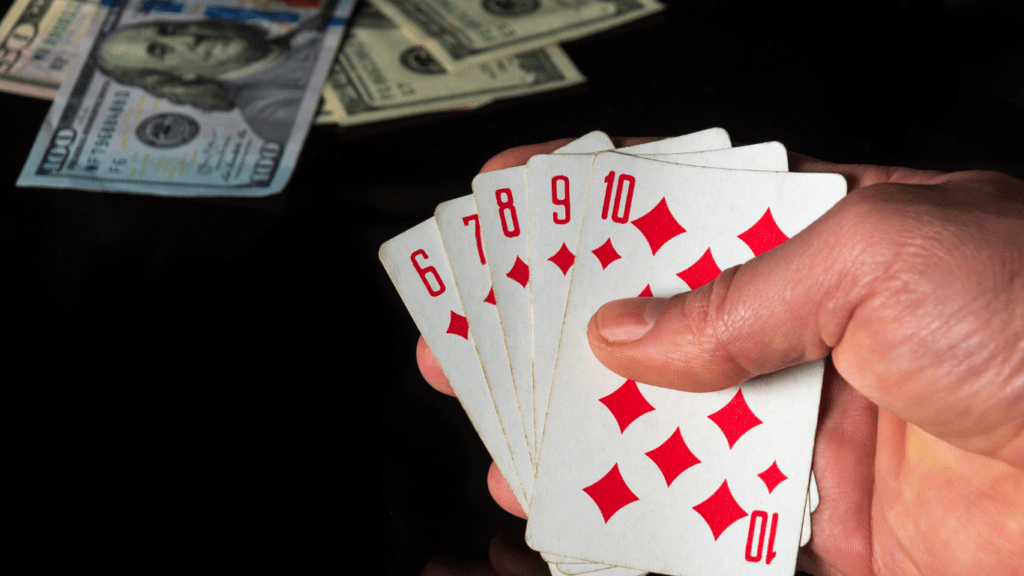Understanding the High-Stakes Poker Landscape
High-stakes poker players operate within a complex and dynamic ecosystem. The environment is defined by large sums, with buy-ins often exceeding $10,000 per session. These high stakes attract seasoned professionals and wealthy amateurs alike, creating a competitive atmosphere unlike any other.
Key elements distinguish the high-stakes landscape from casual play. First, the skill level is remarkably high; players must analyze every move, spotting patterns, and predicting opponents’ strategies with precision. Second, bankroll management becomes crucial; successful players allocate funds strategically, avoiding catastrophic losses even in prolonged losing streaks.
Pressure in high-stakes games is immense. Players encounter challenges beyond money, including:
- reputation
- psychological endurance
A single decision can alter the course of a game, and seasoned players thrive under that pressure, using it to sharpen focus and decision-making.
Understanding these factors is essential for anyone looking to grasp the high-stakes poker world or apply the strategies and mental fortitude exemplified by its players to other high-pressure environments.
Psychological Traits of Successful Players
Successful high-stakes poker players possess distinct psychological traits that set them apart. Their mental fortitude enables exceptional performance under pressure.
Emotional Resilience
Emotional resilience is crucial for maintaining composure. Players often face significant emotional swings during games. They must manage stress effectively to prevent poor decision-making. Experienced players maintain focus and control emotions even after a bad beat or loss. This resilience helps them capitalize on opportunities and avoid tilt, a state of emotional agitation that leads to irrational play.
Calculated Risk-Taking
Taking calculated risks is a trademark of successful poker players. They assess situations and probabilities swiftly and accurately. Decision-making hinges on analyzing potential outcomes and associated risks. Players balance assertiveness with caution by calculating pot odds and potential hands meticulously. This precision allows them to execute bold moves confidently when the odds are in their favor.
Adaptability and Flexibility
Adaptability in poker significantly impacts success rates. Poker players encounter diverse opponents and strategies in every high-stakes game. They must adjust play styles rapidly to counter varying tactics. This flexibility ensures they stay unpredictable and maintain control. Top players incorporate new strategies swiftly, turning challenges into opportunities to gain an advantage.
Strategic Thinking and Planning

In high-stakes poker, strategic thinking and planning are vital for success. Players employ various tactics to anticipate situations and achieve their goals.
Reading Opponents
- Understanding opponents’ behavior gives players a significant edge.
- Through observation, I notice patterns and tendencies in their play.
- Identifying subtle cues, such as changes in betting amounts or timing, offers insights into their strategies.
- Experienced players decode these signals, enabling them to predict opponents’ future actions accurately.
- This skill helps in formulating counter-strategies and staying a step ahead.
Managing Uncertainty
- Handling uncertainty is crucial in high-stakes poker due to constantly changing game dynamics.
- By analyzing potential outcomes, I determine the optimal course of action under ambiguous conditions.
- Assessing the risk-to-reward ratio allows players to make informed decisions while maintaining flexibility.
- By preparing for multiple scenarios, players can adjust their strategies quickly, ensuring resilience and adaptability in unpredictable situations.
The Role of Experience and Learning
High-stakes poker players rely on experience to refine their game. I gain insights from both wins and losses, using each game to enhance my strategy and mental toughness.
Learning from Losses
Losses in poker serve as powerful teachers. I use each setback to analyze what went wrong and identify areas for improvement. For instance, losing due to a misread can guide me in refining my observational skills. Reviewing my plays helps me understand opponents’ strategies, improving my adaptability in future games. This iterative process of reflection and learning sharpens my decision-making and strengthens my emotional resilience under pressure.
Building a Strategic Edge
Experience allows me to develop a strategic edge in poker. I accumulate patterns and behaviors, enabling me to predict opponents’ moves with higher accuracy. Consistent practice helps me anticipate strategies, giving me control over game outcomes. By understanding diverse play styles, I adapt swiftly, turning unpredictability to my advantage. Each game builds on the last, creating a comprehensive knowledge base that positions me for success in high-stakes environments.
Insights from Professional Players
Engaging with high-stakes poker requires mastering specific skills, and professionals offer invaluable perspectives on approaching the game. A common theme among top players is discipline. I notice their ability to stick to a predetermined strategy, even when under immense pressure, which minimizes impulsive decisions.
Patience emerges as another critical trait. Players like Daniel Negreanu emphasize waiting for the right moments, rather than forcing actions. This patience lets them capitalize on others’ mistakes and leverage strong positions when the time’s right.
Intuition plays a significant role too. Pros often mention developing a sixth sense about opponents’ intentions. By honing observational skills, they discern subtle shifts in behavior, granting them an edge in deciding when to hold or fold.
Furthermore, adaptability in strategy is highlighted by professionals. Phil Ivey, for instance, discusses shifting play styles depending on the table dynamics. This flexibility helps in staying unpredictable and adjusting tactics in different situations, maintaining an advantage.
Self-awareness also stands out, as self-critical evaluation improves gameplay. By regularly reviewing hands and strategies, players identify patterns and refine their approach. This commitment to continuous improvement is indispensable in maintaining a competitive edge.
Incorporating these insights, my understanding of poker’s nuanced demands deepens, revealing that success in high-stakes environments extends beyond mere luck.

 Tayla Christmas brought her creativity and analytical skills to Wild Gamble Greed, helping design the platform’s interactive features and user-friendly interface. Her attention to detail and commitment to delivering a seamless experience for high-rollers ensured the platform became a trusted resource for gamblers seeking strategic and responsible guidance. Tayla’s efforts have been instrumental in building the foundation for Wild Gamble Greed’s success.
Tayla Christmas brought her creativity and analytical skills to Wild Gamble Greed, helping design the platform’s interactive features and user-friendly interface. Her attention to detail and commitment to delivering a seamless experience for high-rollers ensured the platform became a trusted resource for gamblers seeking strategic and responsible guidance. Tayla’s efforts have been instrumental in building the foundation for Wild Gamble Greed’s success.